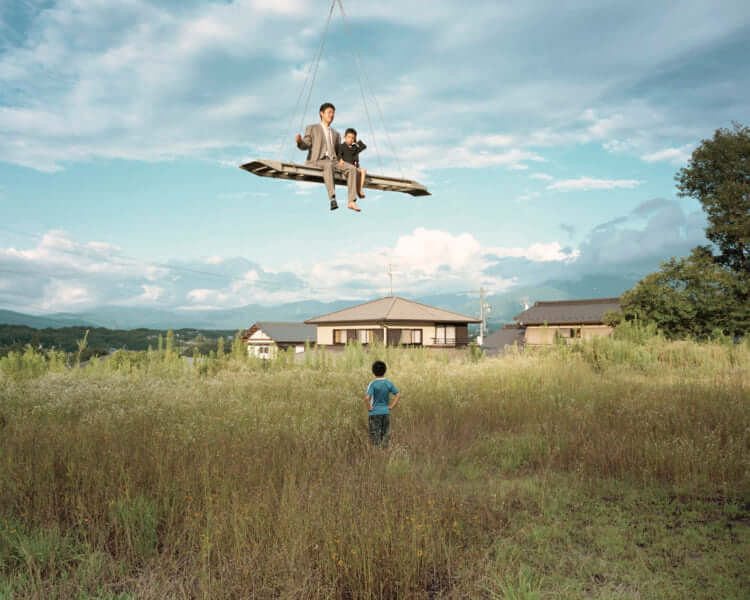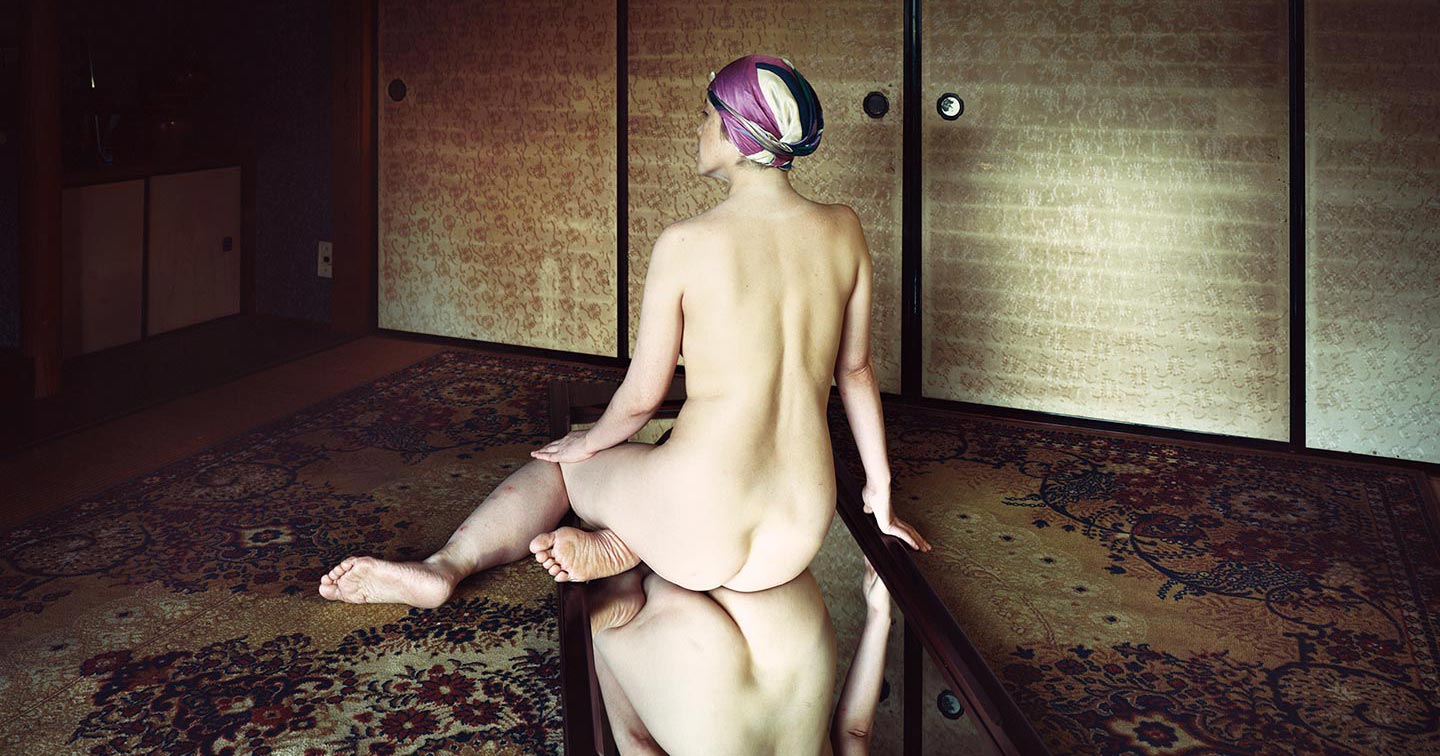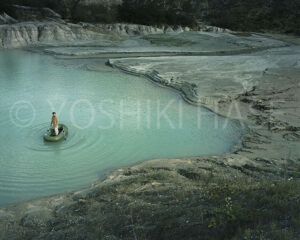
E N A (えな)という作品があります。
これは2011年から7年にわたり岐阜県の東部恵那市で制作した作品です。いま東京のROD GALLERYで、この作品の7回目の個展を開催中です。
この作品の核心はずばり日本の夏です。とはいえ秋や冬の写真も沢山ありますが、あえて”夏”と表現したいのは、日本の田舎の魔的な風土、霊魂を基調に作品のイメージをつくっていたからです。
じっとりした風土、燃える官能、人の汗、セミの音、愛、草いきれ、炎、そういったものを田舎の美しい景色のなかに全て閉じ込めたかったのです。
僕は神奈川県川崎市のベットタウンで青春を過ごしたこともあり、この日本の田舎との出会いは、ただただ圧倒的な体験でした。写真家としてはこれ以上ない題材の宝庫であり、地元の人たちには何でもない日常の風景、建物、古い物ものが魔力を秘め僕に迫りました。
変な言い方ですが、心も身体もすべてを裸に晒し、写真を撮っているような感覚でした。
「あの時にはもう戻れない」という思いを実感として感じたのは、人生でもこの作品を撮った時が初めてだったかもしれません。どんな”時”であろうとも、濃密に凝縮されるものこそが本物の “時” であり、僕の求めるものでした。写真には、そのようなことがとても影響してきます。このようなプロジェクトでは社会性はおろか、人間道徳もまったく無力なものとなります。常識は役に立たない。
僕の写真家としての熱量の一つの極点であったことは間違いありません。人生には、そんな時が何度かあればそれで十分なのだと思います。
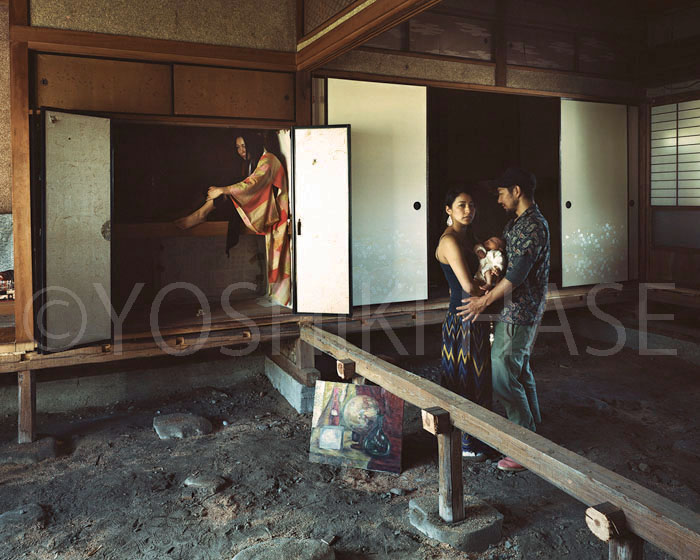
撮影は、場所探しから始まります。恵那は南北にクルマの移動で2時間かかる広大な地域を抱えています。地元の人たちの協力を得て、出会った人々を色々な”場所”に連れていきました。
一つ一つの場所と被写体は、関係がある場合と、ない場合があります。僕にとっては、ひとりひとりの物語を撮ろうとしていたわけではなく、むしろ -恵那- ということだけが共通点である作品を撮りたいと考えていました。小手先のものがたりは必要ないと。
だから、写真にはストーリーがありそうでいて、実際にはないかもしれない。僕自身、その判定がつかないのです。これは見る側の人たちが判断することなのだと思っています。
当時の仕事は、センサーを極限に研ぎ澄まし、ただ一枚一枚の画にその瞬間のビジョンを注入していくことでした。ビジョンは、場所からも人からも得ていました。僕は土地では部外者だったので、これができていたのかもしれない。全てが鮮烈だったのです。作業はうまくいく時もあれば、うまくいかない時もありました。
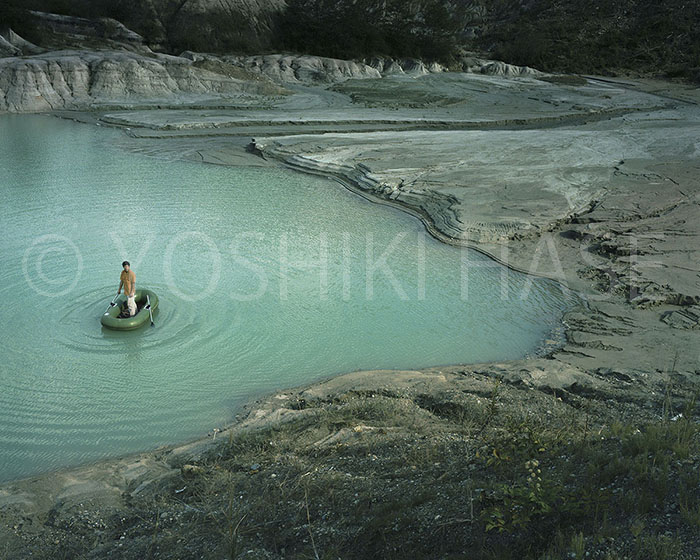
写真というのは、土地や被写体との出会いで 70パーセントは決まります。人智でコントロールできることはあるようで、あまりないということをいつも感じています。
恵那との出会いは、僕にとっての数少ない本物の “出会い”でありギフトであったと思います。制作がひと段落してから数年後に写真集としてまとめることができ 写真集 ー E N A ー がユカイハンズパブリッシングから出版されました。開催中のROD GALLERYの個展にもぜひお越しください。11月20日(2023年)まで。
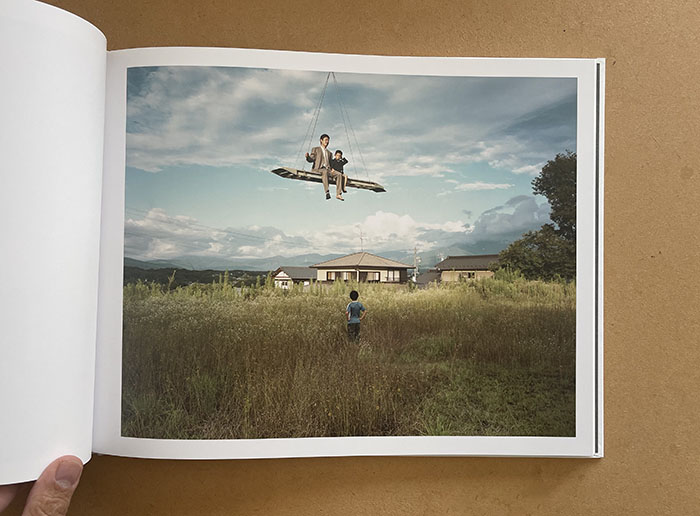
There is a work called E N A .
This work was created in the eastern part of Gifu Prefecture, Ena City, over a period of seven years starting in 2011. I am currently holding my seventh solo exhibition of this work at ROD Gallery in Tokyo.
At the heart of this work is “the Japanese summer”. Although there are many photographs taken in autumn and winter, I dare to describe them as “summer” because I have been creating images based on the magical climate and spirits of the Japanese countryside.
I wanted to capture all of these things in the beautiful scenery of the countryside: the stillness of the climate, the burning sensuality, human sweat, the sound of cicadas, love and hate, the smell of grass, flames, and so on.
I spent my youth in a bedroom town in Kawasaki, Kanagawa Prefecture, and the time and encounters I had in rural Ena, were simply overwhelming. As a photographer, there is no greater treasure trove of subject matter, and the everyday scenery, buildings, and old things that are ordinary to the locals have a magical power that draws me in.
It may sound strange to say, but I felt as if I was taking pictures, exposing my mind, my feelings, and my body, all naked.
This may have been the first time in my life that I actually felt the feeling of “I can never go back to that time”.
No matter what sort of time it is, the dense condensation of time is the real “time,” and that is what I was looking for. Photography is very much about that. Human morality, let alone sociality, was totally impotent in such a time. It was definitely one of the extremes of my passion as a photographer. I believe that a few such moments in life are enough.
Photography begins with finding a location. Ena is a vast area that takes two hours to travel by car from north to south. With the cooperation of the local people, we took the people we met to various places.
Each place and person may or may not have a relationship. For me, I was not trying to photograph each person’s story, but rather, I wanted to make photograph in which the only thing in common was – Ena – . I thought that a story is not necessary.
Therefore, the photographs may seem to have a story, but in reality, they may not. I myself cannot make that judgment. I wanted to leave this as a judgment for the viewer.
My job at the time was to sharpen my sensors to the limit and just put the vision I got at that moment in each picture. I got the vision from the place and from the people. Maybe I was able to do this because I was an outsider. Everything was vivid. Sometimes this process worked, sometimes it didn’t.
Photography is 80 percent determined by the land and the encounter with the subject. I always feel that there are some things that can be controlled by human knowledge, but not many.
The encounter with Ena was an “encounter” and “a gift” for me. A few years after I had finished my work, I was able to compile my photographs into a book, and it was published by Yucai Hands Publishing.

